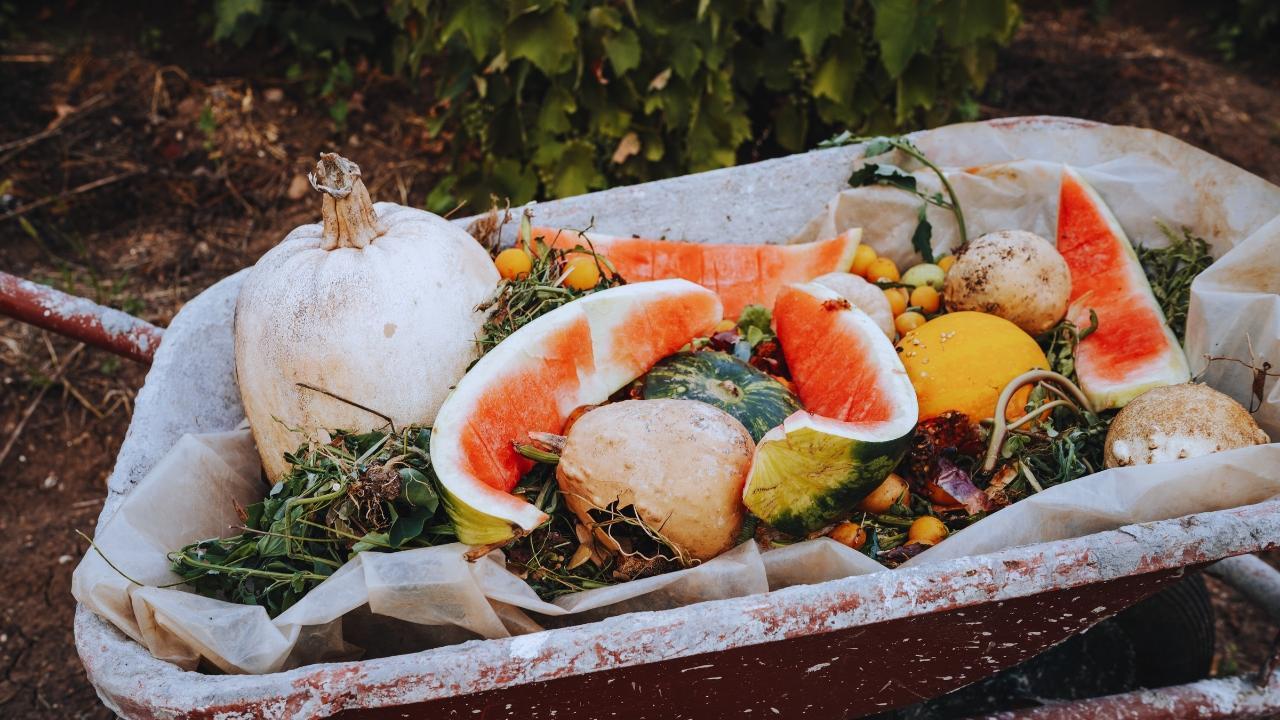
Join 10k+ people to get notified about new posts, news and tips.
Do not worry we don't spam!

Post by : Anish
In an age of overproduction and environmental strain, the fashion industry finds itself at a reckoning. Known for its heavy carbon footprint, toxic dyes, and synthetic fiber pollution, the sector is now being called upon to clean up its act. But the answer might not lie in cutting back—it might lie in turning to what we’ve long considered useless: agricultural waste. From the husks of pineapples to discarded orange peels and resilient milkweed fibers, the transformation of agro-waste into fabric is opening new frontiers in sustainable fashion.
The fashion world, though glamorous on the surface, is one of the largest polluters on Earth. Producing a single cotton shirt takes 2,700 liters of water, while polyester—a plastic-based material—contributes heavily to microplastic pollution in oceans. Fast fashion trends also generate billions of tons of textile waste annually. Yet amidst this ecological catastrophe, a new solution has emerged from the very things we usually throw away: agricultural byproducts.
Among the most promising innovations is orange fiber fabric, developed from the cellulose extracted from orange peels. Each year, juice companies discard millions of tons of citrus waste, which not only costs money to manage but also poses a threat to local environments due to their acidity.
Italian innovators Adriana Santanocito and Enrica Arena founded Orange Fiber, a company that takes this waste and transforms it into a luxurious, lightweight fabric with a silky texture. It behaves like viscose or silk and has been embraced by luxury brands like Salvatore Ferragamo, which released a capsule collection using the fabric. This approach tackles both the problem of agro-waste and the demand for sustainable textiles in one smart loop.
Another major breakthrough came from the Philippines with Piñatex, a sustainable textile made from the fibers of pineapple leaves. These leaves, usually discarded after harvest, are rich in a tough yet flexible fiber. Dr. Carmen Hijosa, the founder of Piñatex and a former leather industry expert, saw the environmental damage caused by tanning processes and sought an alternative.
Piñatex mimics leather in texture and durability, offering an ethical and cruelty-free substitute in the accessories market. Major global brands such as Hugo Boss and H&M have tested Piñatex in their collections, while smaller ethical fashion labels have adopted it for shoes, bags, and jackets. It has quickly become a benchmark in circular fashion economics.
The milkweed plant, once widely considered a useless weed, is being reevaluated for its silky floss, which is light, water-repellent, and insulating. Traditionally used by Native American communities and even the US military during World War II (for life vests), milkweed is enjoying a resurgence in Canada and the US.
Milkweed’s natural fibers can be blended with other materials to create insulation for jackets, padding for bedding, and even blended into yarns for textile weaving. Its cultivation is low-maintenance and environmentally friendly—milkweed requires no pesticides and supports pollinator species like monarch butterflies. Some startups are working to scale its use beyond insulation into full-fledged textiles.
The humble coconut husk, known for its tough coir fibers, is entering the fashion lexicon in more refined ways. While traditionally used for mats, ropes, and brushes, coir is now being processed into softer blends to pair with cotton or silk substitutes. Its naturally antimicrobial properties make it a favorite for athletic wear and undergarments.
In India and Sri Lanka, where coconut farming is widespread, this innovation could turn a commonly discarded material into a revenue-generating opportunity for rural communities. Textile tech companies are exploring enzyme treatments to soften coir fibers further, enabling its use in t-shirts, towels, and socks.
Banana plants are harvested once in their lifetime, after which the stems are often left to rot. But these banana stems contain high-quality fibers, especially in the Philippines, where “Abacá”—a banana species—is already a traditional fiber source. This plant’s outer stem can be turned into a linen-like fabric that is biodegradable and breathable.
It has been used by luxury designers as well as sustainable brands aiming to reclaim cultural practices. The banana fiber industry is now being revived to tap into global demand, especially as linen prices soar and consumers seek ethical alternatives.
Bioplastics made from corn starch are already used in packaging, but new experiments show that corn husk cellulose can be extracted and spun into thread. While still in the early stages, researchers are working to blend corn fiber with other natural materials to create compostable textiles for casual wear. Corn production globally generates tons of husk waste annually, much of which is currently burned or dumped. The fashion industry is beginning to see potential in redirecting this volume into fabrics.
These textile innovations aren’t just trendy—they are solutions embedded in circular economy principles. By using agricultural waste that would otherwise go to landfills, these materials reduce pressure on landfills, cut down greenhouse gas emissions, and decrease reliance on synthetic, petroleum-based fibers.
Moreover, they bring farmers into the fashion supply chain, offering them a secondary source of income from byproducts that previously had no value. In doing so, the model empowers communities while encouraging sustainable practices from field to fashion runway.
Today’s fashion consumers are smarter, more ethical, and increasingly vocal. The demand for transparency in sourcing, production ethics, and environmental impact is reshaping supply chains. Reports show a significant spike in consumer preference for garments labeled “sustainable,” “vegan,” or “biodegradable.”
This is especially true among millennials and Gen Z consumers, who are more likely to support eco-conscious brands even if it comes at a premium. For them, buying a t-shirt made from pineapple leaves or wearing a jacket padded with milkweed isn’t just a fashion statement—it’s a lifestyle choice reflecting values.
While the innovations are impressive, scaling them remains difficult. Many agro-waste fabrics are still produced in small quantities due to complex extraction or processing needs. The costs can be higher than traditional textiles, deterring large-scale adoption.
Additionally, infrastructure gaps, especially in developing countries where agro-waste is abundant, prevent proper collection, processing, and supply chain integration. This limits their impact despite growing interest. Governments, NGOs, and private investors must step in to help fund these innovations and create incentives for their use.
Looking forward, the future of sustainable fashion may lie not only in recycling waste but in bio-design—creating fabrics in laboratories using yeast, fungi, and bacteria. Mycelium leather (made from mushrooms), lab-grown spider silk, and algae-based knits are already being piloted in design studios around the world.
But agro-waste fabrics hold a distinct appeal—they reuse existing materials, they’re more culturally and economically inclusive, and they bridge the gap between rural agriculture and urban fashion.
The convergence of biotechnology, material science, and sustainable farming is transforming fashion from an extractive industry to one of regeneration. It’s no longer a matter of aesthetic, but of survival—fashion needs to adapt, and agro-waste might just be its most beautiful evolution yet.
This article is part of Newsible Asia sustainability-focused editorial series. The views expressed are intended to inform and inspire readers about emerging innovations and responsible industry practices. The content is based on publicly available information and trends within the fashion and biotechnology sectors. No commercial affiliations are implied.
Biotechnology Innovation, Sustainable Textiles










Lily Collins Shines in Glamorous Calvin Klein Look at New York Fashion Week
Lily Collins stuns at NY Fashion Week in a sparkling Calvin Klein co-ord set, blending elegance, gla

Lippo Di Carrara wins UAE President’s Cup Derby at Doncaster
Lippo De Carrere shines at Doncaster, winning the UAE President’s Cup UK Arabian Derby, the richest

Jaismine Lamboria Wins World Boxing Gold for India
India’s Jaismine Lamboria claimed World Boxing gold, while Nupur Sheoran earned silver and Pooja Ran

Sri Lanka beat Bangladesh by 6 wickets in Asia Cup 2025 opener
Sri Lanka started their Asia Cup 2025 campaign with a six-wicket win over Bangladesh, powered by Nis

PM Modi Lays ₹6,300 Crore Projects in Assam Criticizes Congress
PM Modi accuses Congress of backing infiltrators, lays ₹6,300 crore health and infrastructure projec

Sushila Karki Becomes Nepal’s First Woman Prime Minister
Eminent jurist Sushila Karki, 73, becomes Nepal’s first woman prime minister after Gen Z protests to